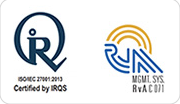Law’s failure to harness the power of data mining and analytics is one of several interconnected factors widening the digital gap separating it from business.
Forbes
The legal industry is without doubt one of the most data-intensive industries out there. Legal departments that capture the various types of data and convert them into key performance indicators (KPIs) can improve their business-making decisions, and increase efficiency within their department. However, the dizzying amount of data available makes it difficult for legal departments to collate them and segregate them in a simple manner – without adding an extra process to already-burdened teams.
How Dashboards Provide Value To Legal Operations

Help Visualize and Organize Data
The ABA notes that dashboards offer an easy way to monitor and present legal department KPIs. Dashboards provide a simple way to visualize the different kinds of data available, and how it can be used to gain further insights into budgets, workflows, and operations.
Legal tech is constantly evolving, and with smart widgets and add-ons, there’s no limit to the ways they can improve legal departments. Some widgets display legal matters that exceed the legal budget, and can help the legal department and legal ops teams reallocate money where it’s needed the most.

Converts Business Data Into Action-oriented Information
With a dashboard, legal departments and legal operations teams can collaborate on tasks and keep the legal department aligned with the company’s goals. What’s more, dashboards allow individuals across the organization transparency into legal operations and can help them assist the legal department.

Offers Benchmarks and Analytics to Legal Teams
In addition to streamlining data in a modern and easy-to-use layout, dashboards help legal departments set benchmarks for current and future processes. All processes are aligned with the company’s end goal, which the legal department is instrumental in developing. Although dashboards come with preset KPIs, legal departments can and should customize them according to their unique legal and business needs to maximize the benefits of their dashboards.
Types of Dashboards
There are several types of dashboards available for legal departments to use, but each type presents data and analytics in its unique way.
1) Task Flow Dashboards
In a task flow dashboard, presentations are made according to the different types of information and data available. The various data and inputs are consolidated and presented in a cohesive manner. Generally, this type of dashboard is used as a task manager. Legal teams use the task flow dashboard to know what processes need to be completed, and which ones to focus on next.
2) Business Intelligence Dashboards
Business intelligence dashboards take data and information to create visual presentations with easy to understand and read designs. In this type of dashboard, legal departments can visualize legal spend, legal operations, and gain insights into better decision making processes.
Overall, dashboards help legal departments move from emails and spreadsheets to platforms that make data visualization and analytics a piece of cake. Teams can collaborate on legal spend, and help align their processes with their organization’s goals.







